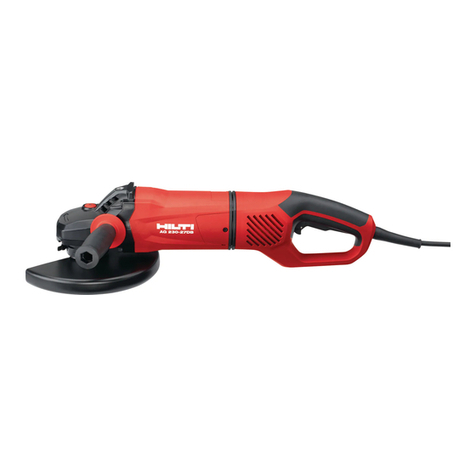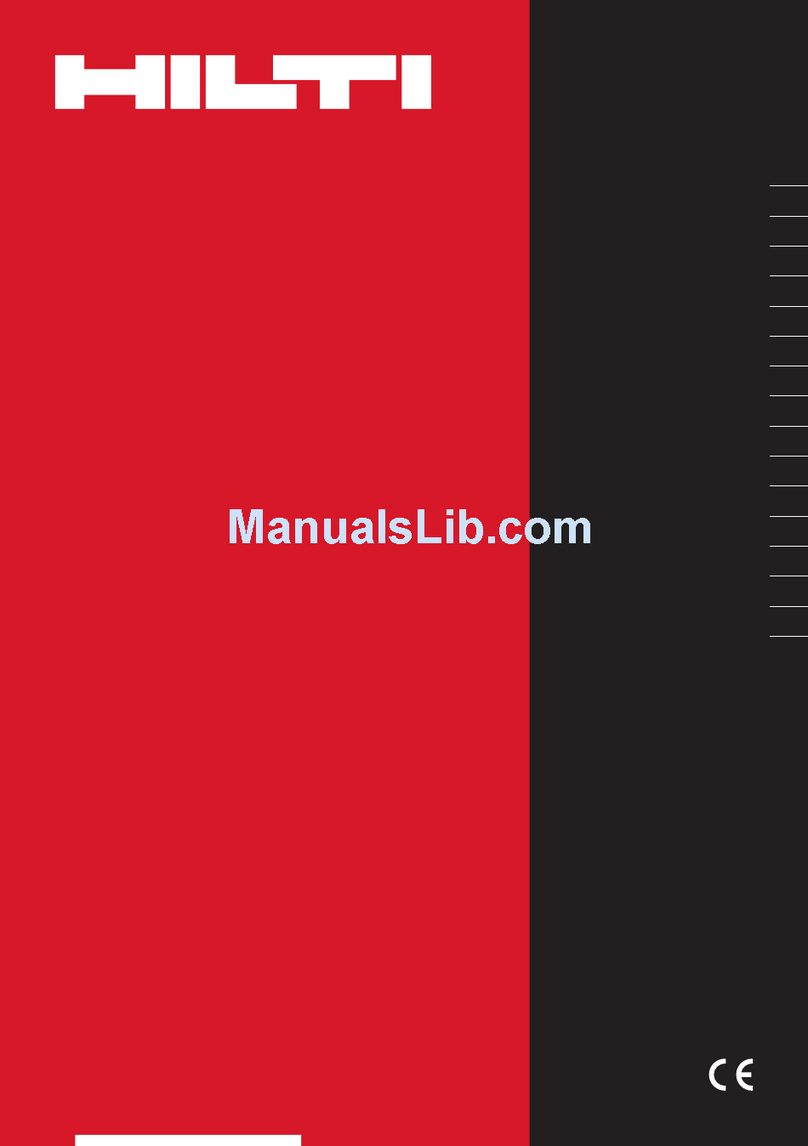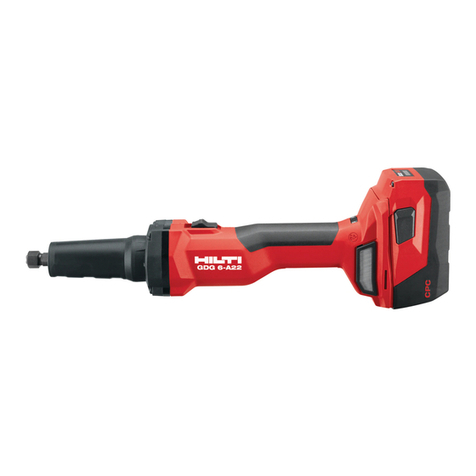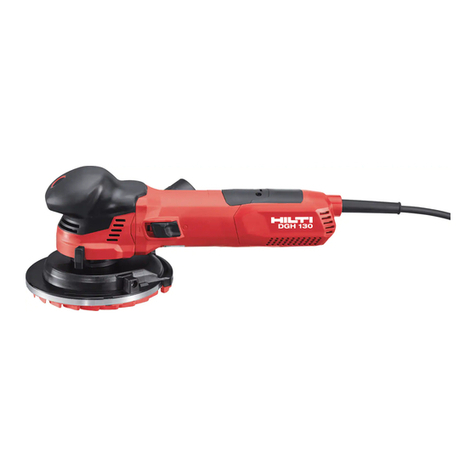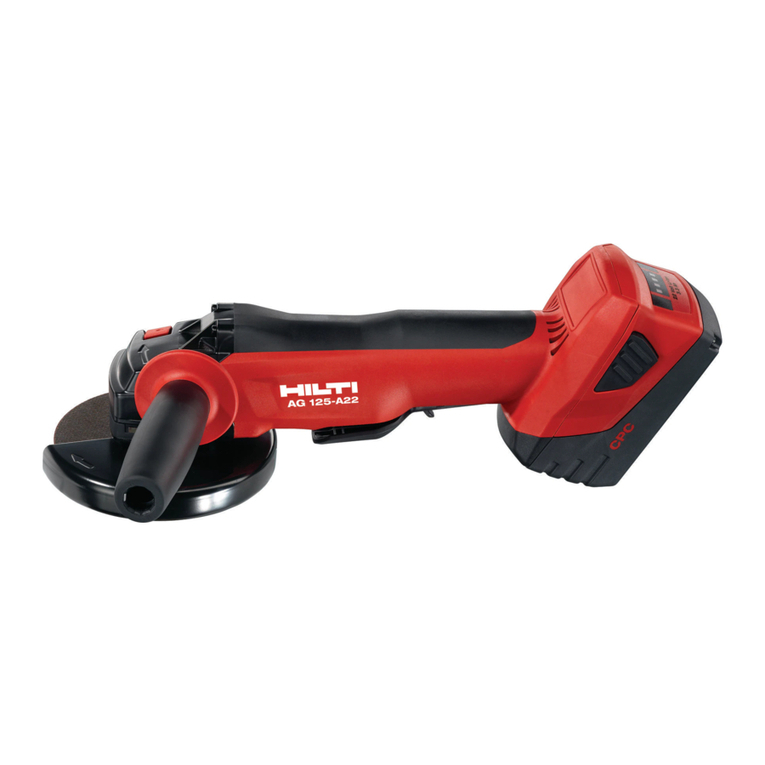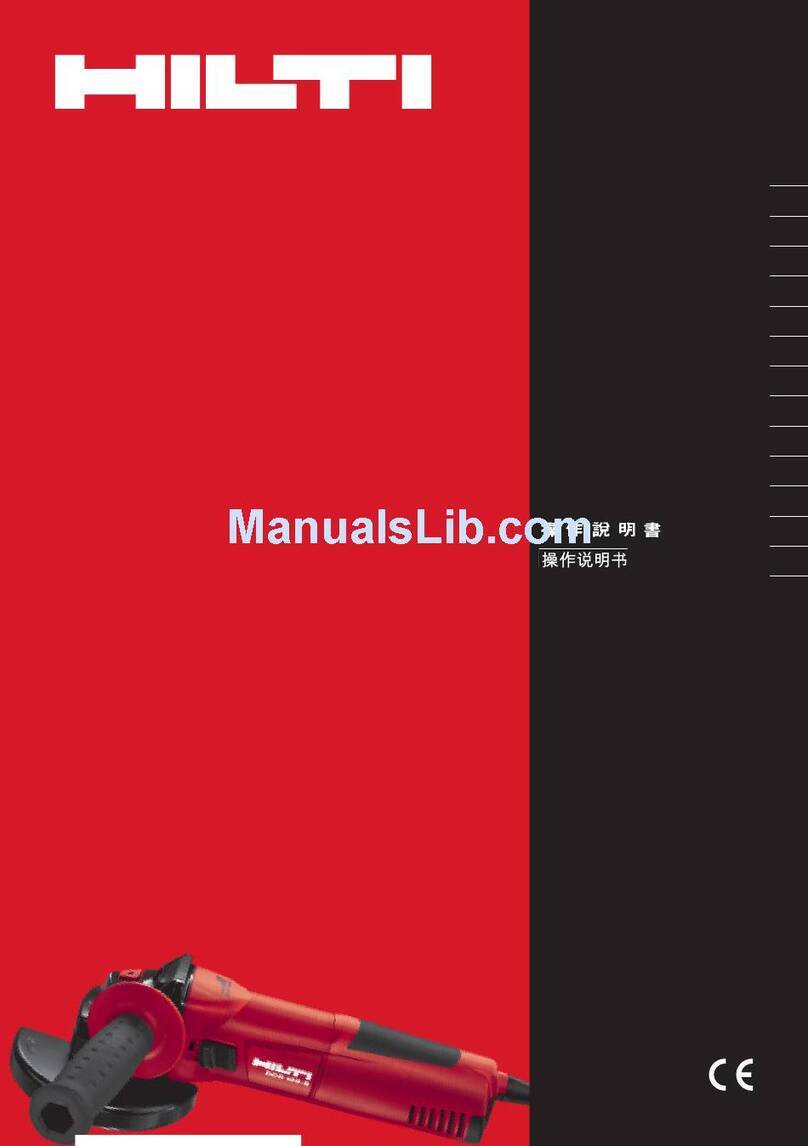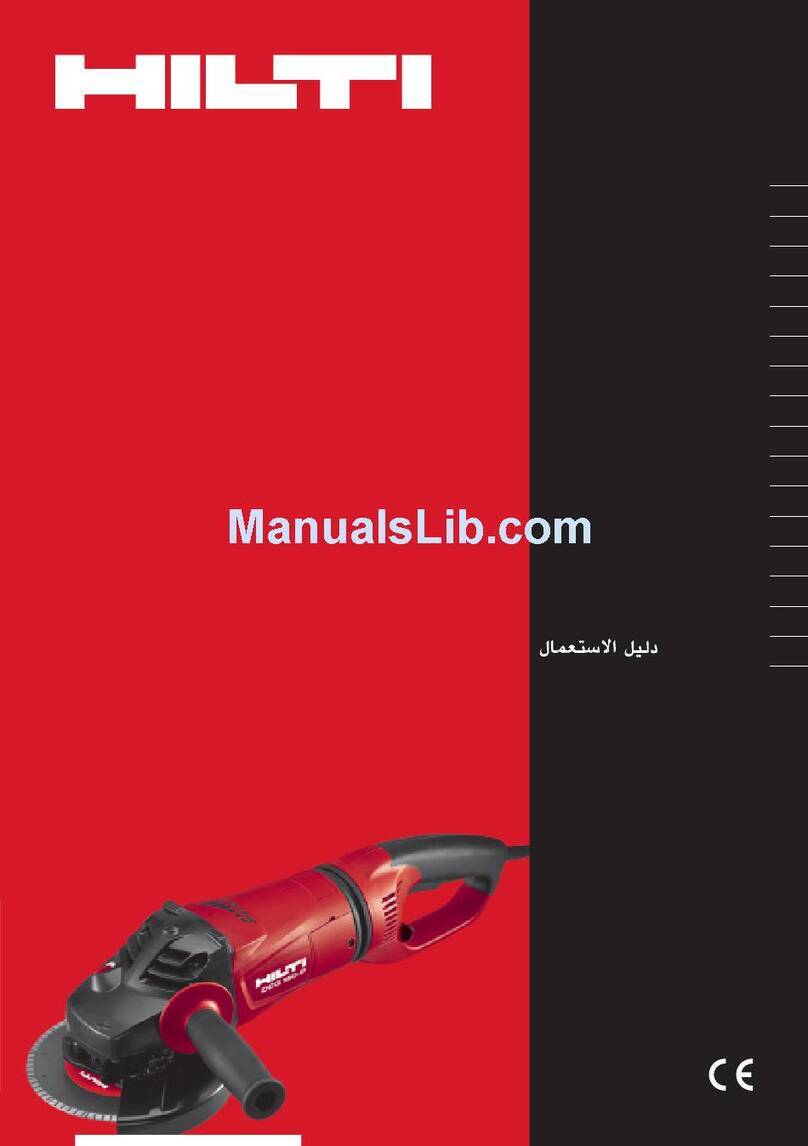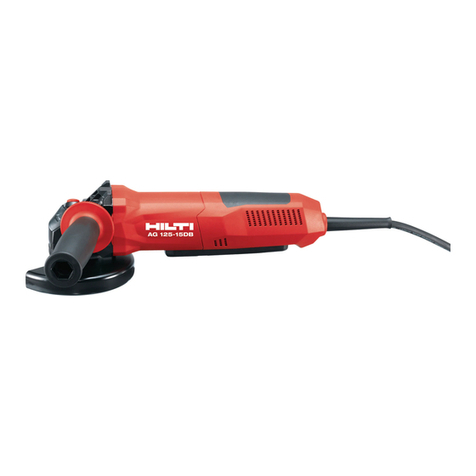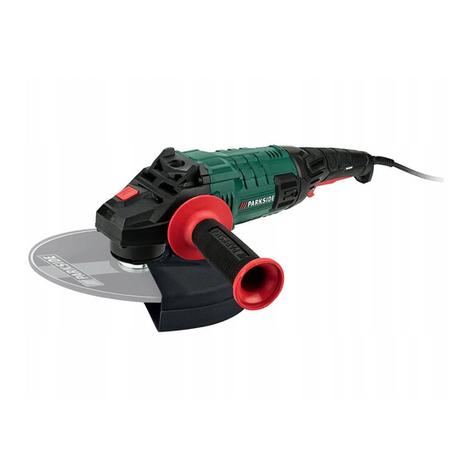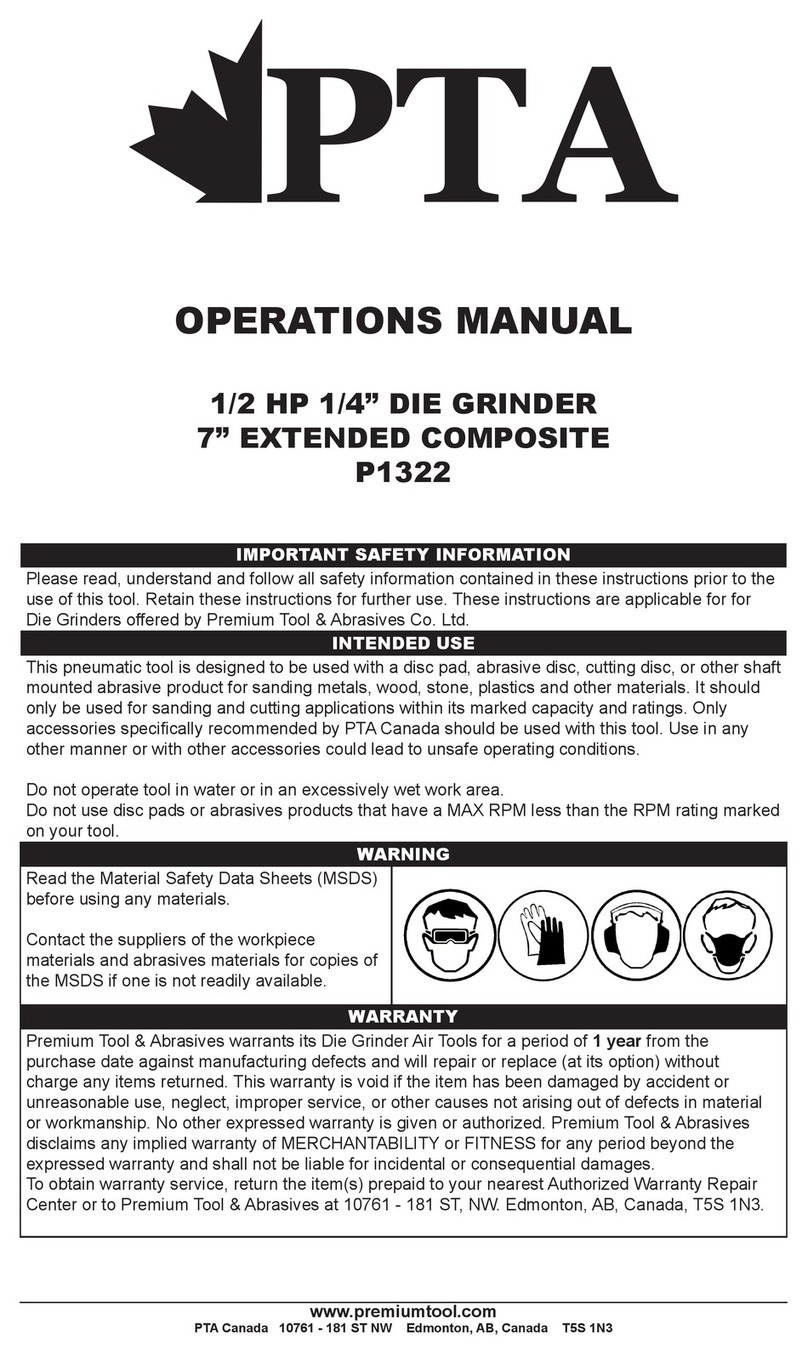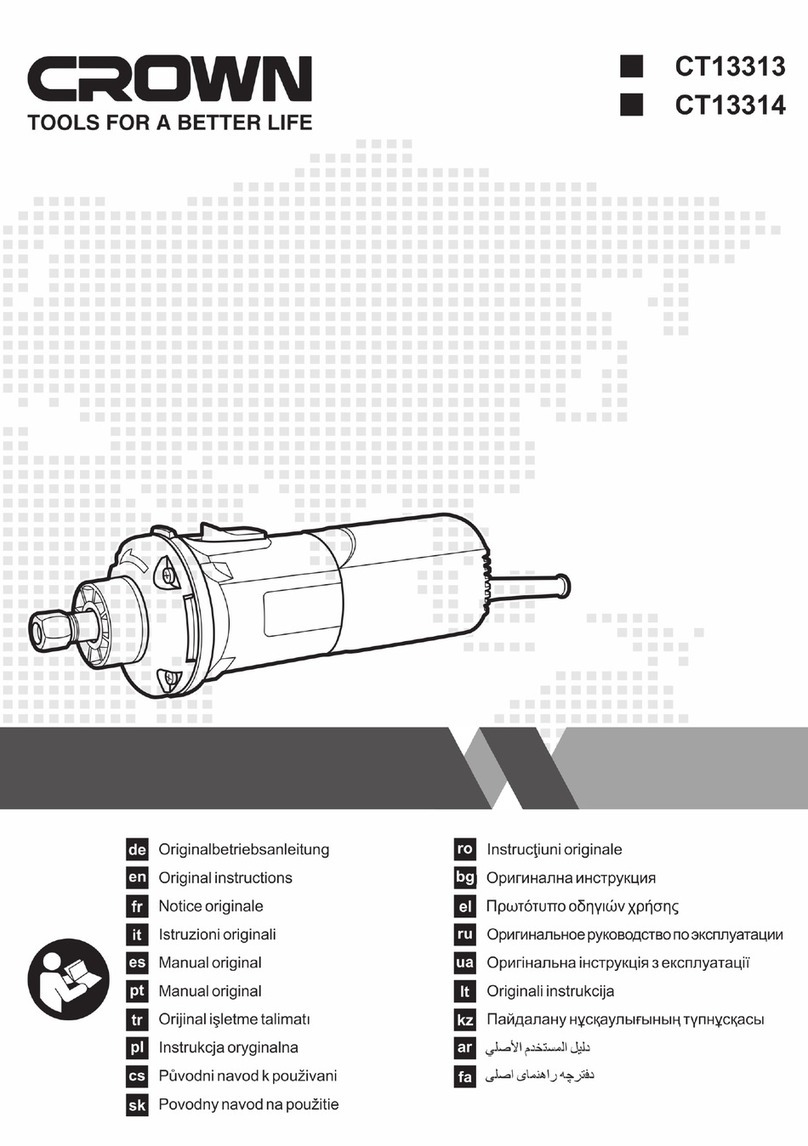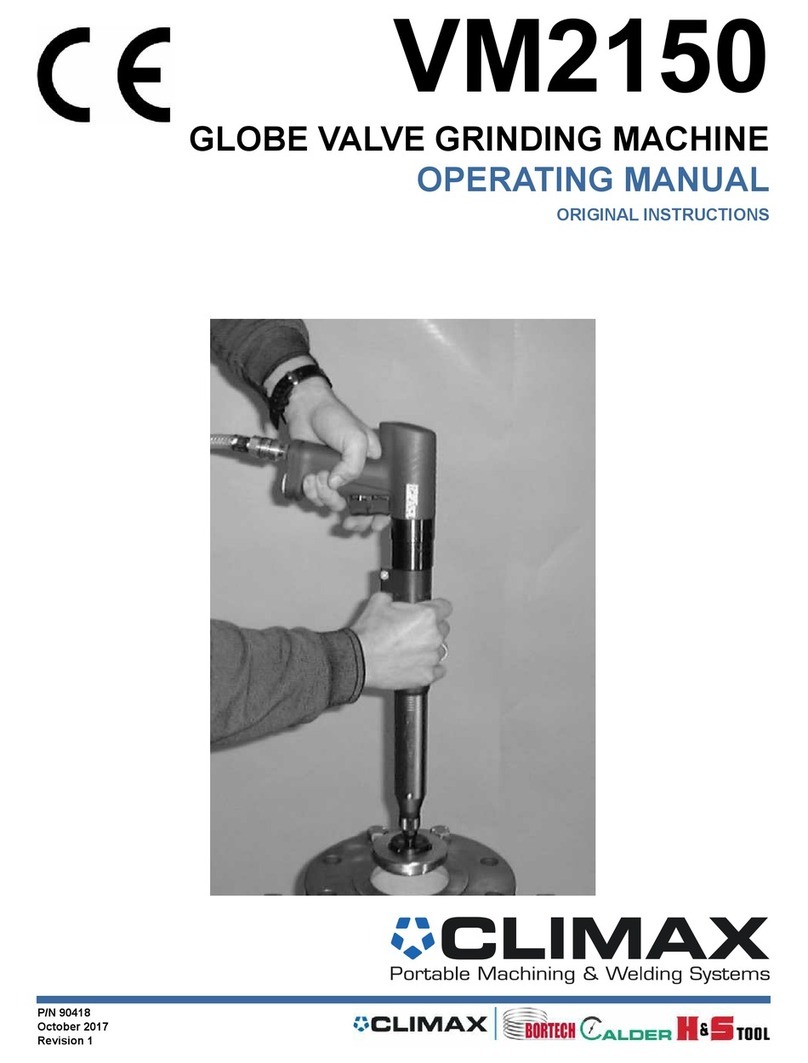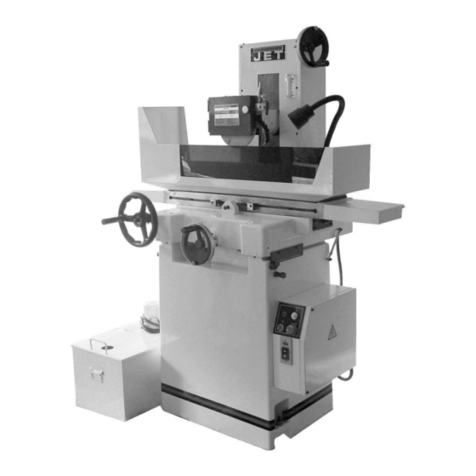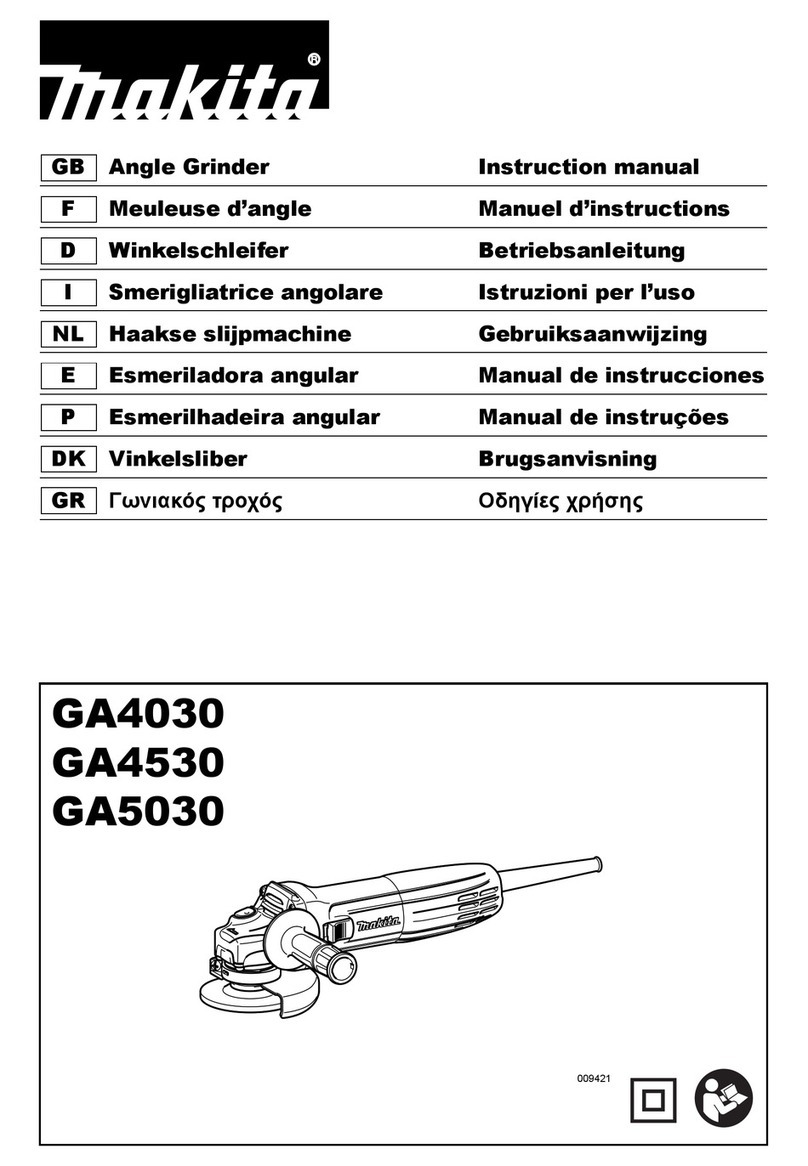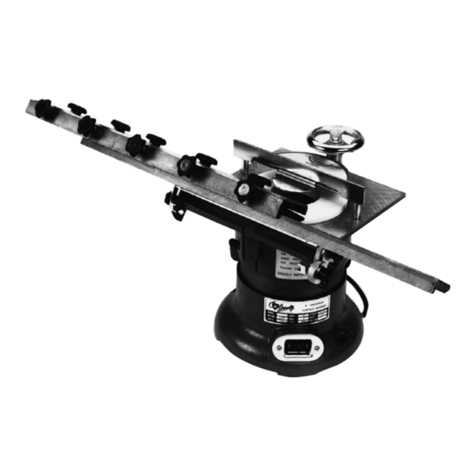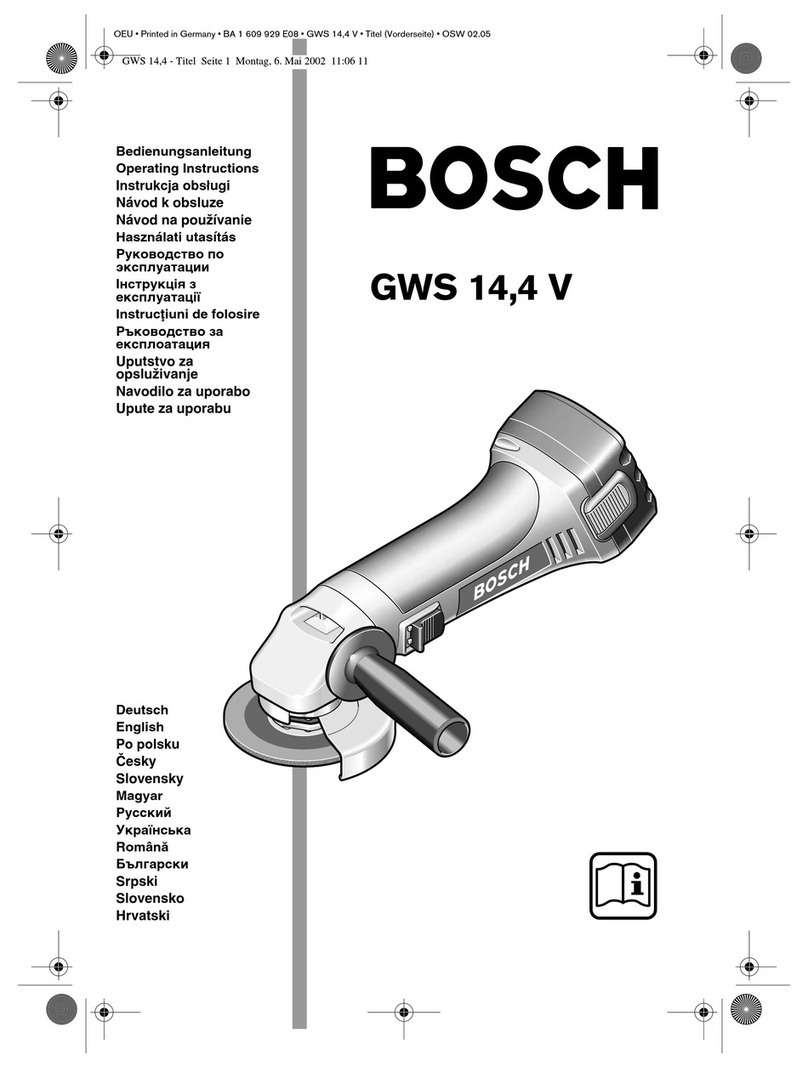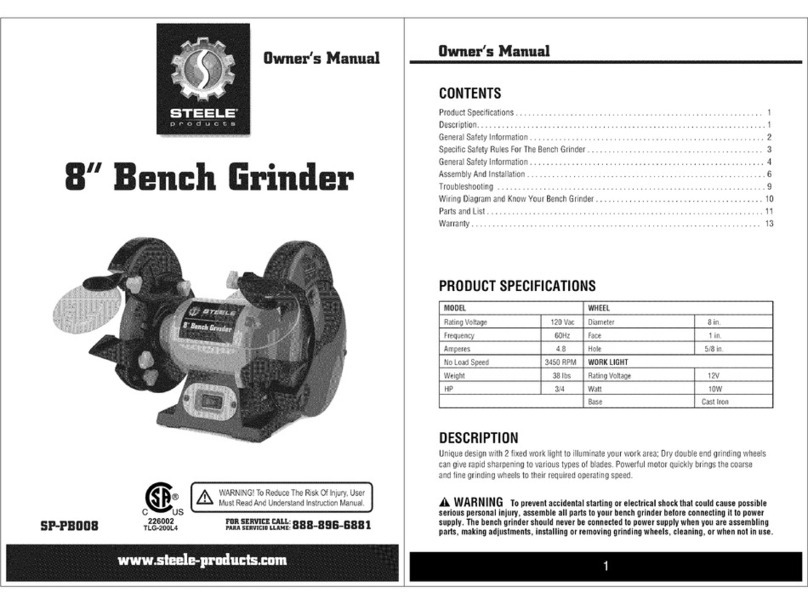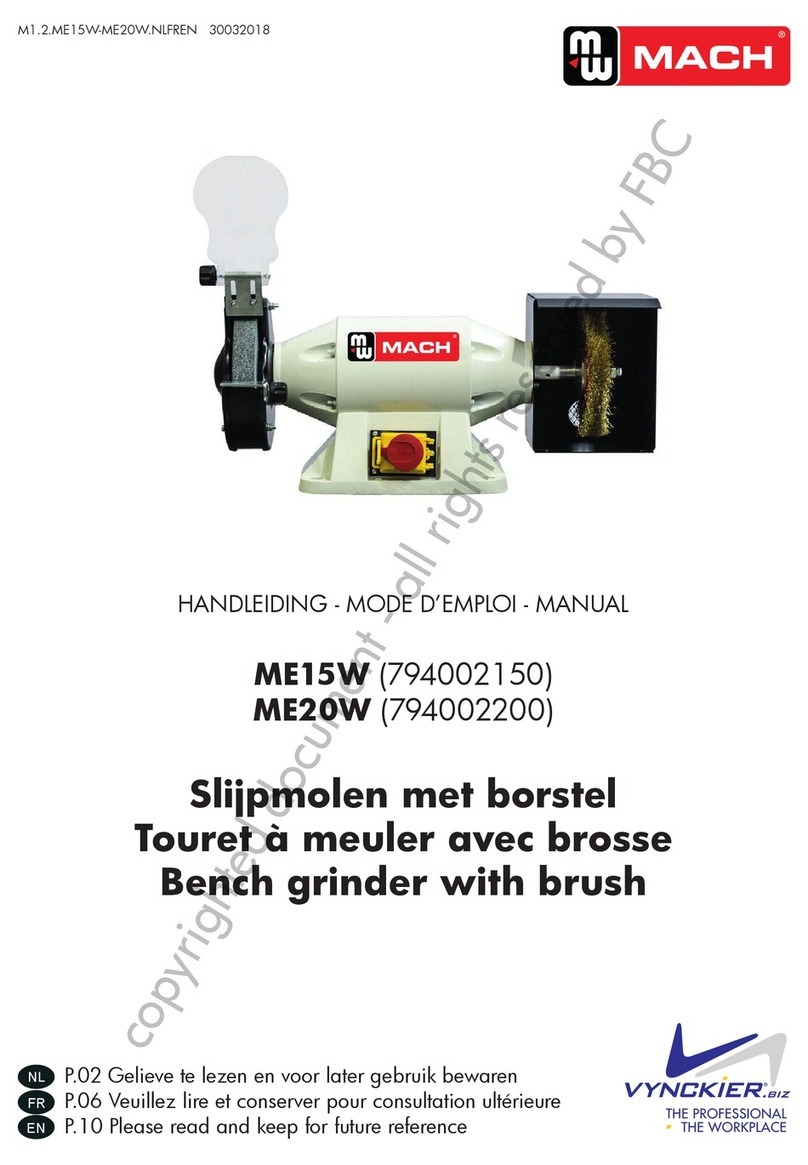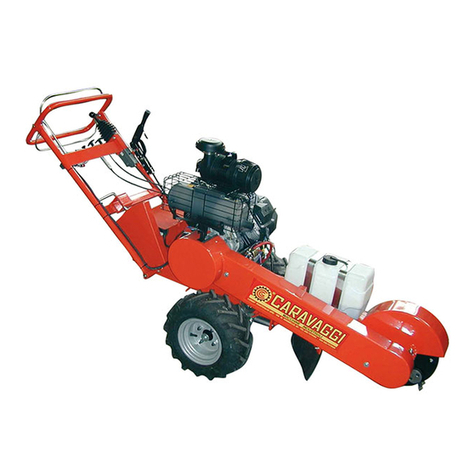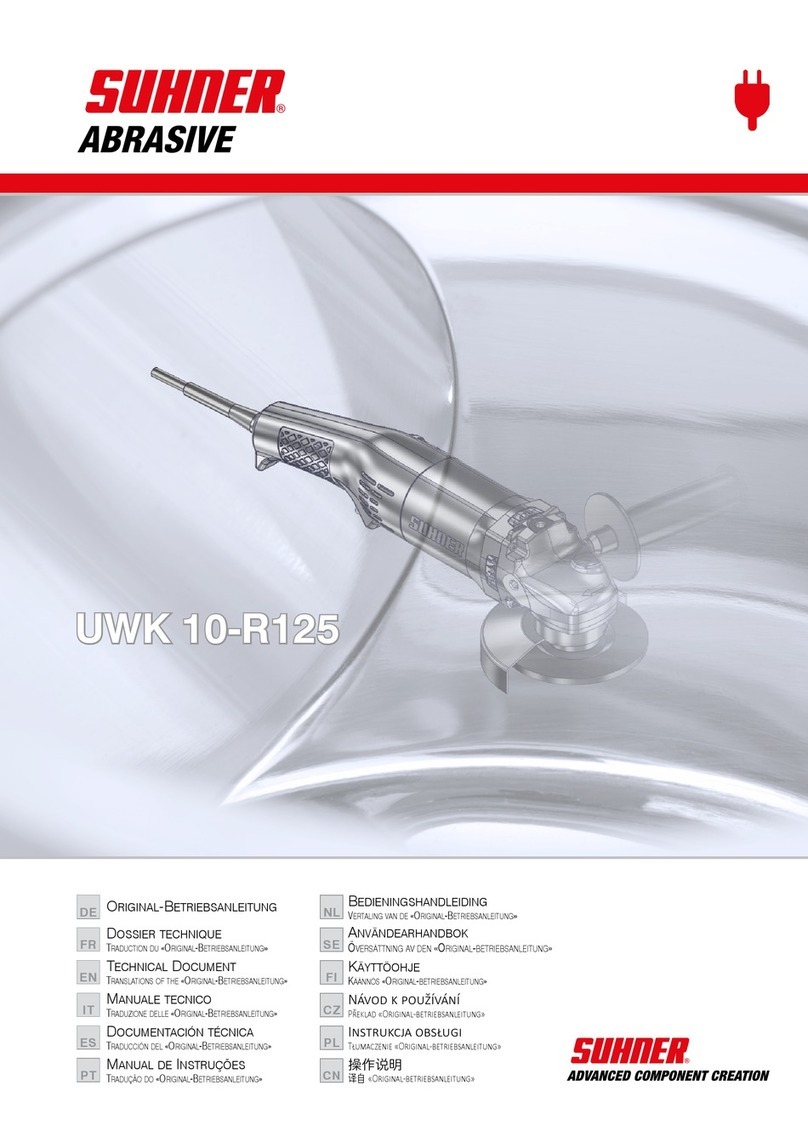
4 English 2241314 *2241314*
▶Use the power tool, accessories and tool bits etc. in accordance with these instructions, taking
into account the working conditions and the work to be performed. Use of the power tool for
operations different from those intended could result in a hazardous situation.
▶Keep handles and grasping surfaces dry, clean and free from oil and grease. Slippery handles and
grasping surfaces do not allow for safe handling and control of the tool in unexpected situations.
Battery tool use and care
▶Recharge only with the charger specified by the manufacturer. A charger that is suitable for one type
of battery pack may create a risk of fire when used with another battery pack.
▶Use power tools only with specifically designated battery packs. Use of any other battery packs may
create a risk of injury and fire.
▶When battery pack is not in use, keep it away from other metal objects, like paper clips, coins,
keys, nails, screws or other small metal objects, that can make a connection from one terminal to
another. Shorting the battery terminals together may cause burns or a fire.
▶Under abusive conditions, liquid may be ejected from the battery; avoid contact. If contact
accidentally occurs, flush with water. If liquid contacts eyes, additionally seek medical help. Liquid
ejected from the battery may cause irritation or burns.
▶Do not use a battery pack or tool that is damaged or modified. Damaged or modified batteries may
exhibit unpredictable behaviour resulting in fire, explosion or risk of injury.
▶Do not expose a battery pack or tool to fire or excessive temperature. Exposure to fire or temperature
above 130° C (265 °F) may cause explosion.
▶Follow all charging instructions and do not charge the battery pack or tool outside the temperature
range specified in the instructions. Charging improperly or at temperatures outside the specified range
may damage the battery and increase the risk of fire.
Service
▶Have your power tool serviced by a qualified repair person using only identical replacement parts.
This will ensure that the safety of the power tool is maintained.
▶Never service damaged battery packs. Service of battery packs should only be performed by the
manufacturer or authorized service providers.
2.1.2 Additional safety instructions
Personal safety
▶Use the product only when it is in perfect working order.
▶Never tamper with or modify the tool in any way.
▶Avoid touching rotating parts – risk of injury!
▶Always hold the power tool with both hands on the handles provided. Keep the handles clean and dry.
▶Wait until the product stops completely before you lay it down.
▶Wear protective gloves also when changing the accessory tool. Touching the accessory tool presents a
risk of injury (cuts or burns).
▶Make sure that the workplace is well ventilated and, where necessary, wear a respirator appropriate for
the type of dust generated. Contact with or inhalation of the dust may cause allergic reactions and/or
respiratory or other diseases among operators or bystanders.
▶Before beginning the work, check the hazard classification of the dust that will be produced. Dust from
materials such as lead-based paint, certain types of wood and concrete/masonry/stone containing quartz,
minerals or metal can be harmful to health. Certain kinds of dust such as oakwood and beechwood dust
are classified as carcinogenic, especially in conjunction with additives for wood conditioning (chromate,
wood preservative).
▶Take breaks between working and do physical exercises to improve the blood circulation in your fingers.
Exposure to vibration during long periods of work can lead to disorders of the blood vessels and nervous
system in the fingers, hands and wrists.
Power tool use and care
▶Do not set the product down with its weight resting on the battery.
2.1.3 Battery use and care
▶Observe the special regulations and instructions applicable to the transport, storage and use of Li-ion
batteries.
▶Do not expose batteries to high temperatures, direct sunlight or fire.
▶Do not disassemble, crush or incinerate batteries and do not subject them to temperatures over 80 °C.
▶Do not use or charge batteries that have suffered mechanical impact, have been dropped from a height
or show signs of damage. In this case, always contact your Hilti Service.
